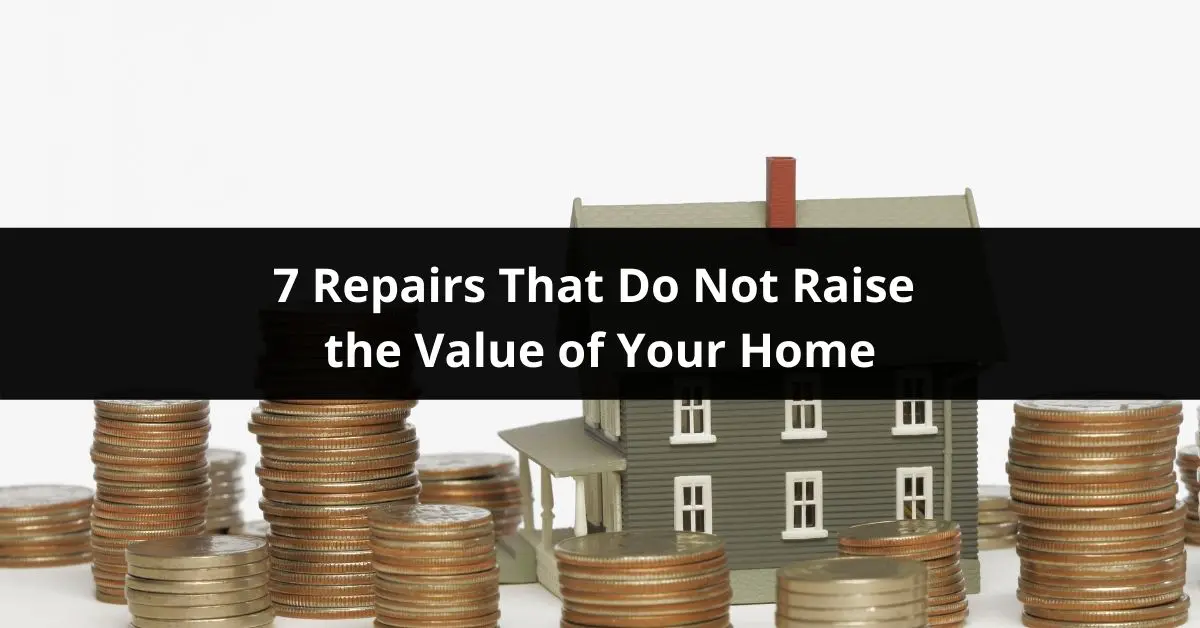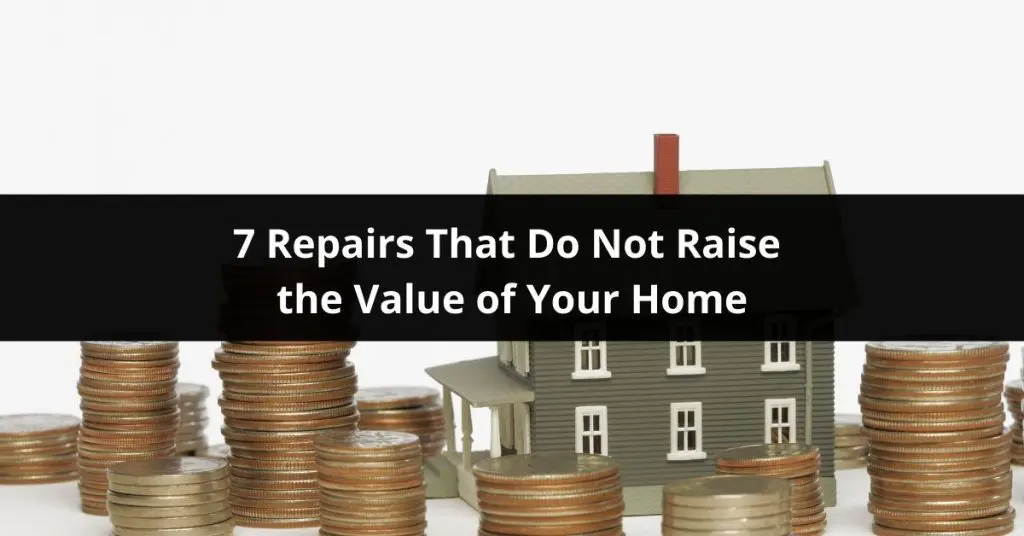Home improvements can be a great way to make your house more desirable when selling it. But not every home repair increases the value of your house.
Although some home repairs may look good visually, they don’t raise the sale price because there isn’t a “perceived value” or they won’t help your house pass inspection. These ones may be better left to the homebuyer. So if you’re curious which home repairs do not raise the value of your house, and which ones you should let the buyer handle, here’s seven of the big ones.
Things not to fix when selling your house:
- Minor electrical issues
- Outdoor cracks
- Working appliances
- Cosmetic flaws
- Dream fixes
- Grandfathered code violations
- Paint that’s ‘trendy’
Here’s why these seven homes repairs do not increase your home’s sell price.
Minor Electrical Issues
Minor electrical issues include teensy problems like loose electrical sockets and light switches that don’t work, or a burnt-out bulb. Buyers won’t usually notice these problems when looking at your house. There’s also a good chance that inspectors won’t mention minor electrical problems in their report.
Changing a burnt-out lightbulb isn’t a bad idea. But anything more complex should be done by a licensed electrician, and better done by the buyer because the buyer may want new light fixtures anyways.
Outdoor Cracks
Outdoor cracks can be tiny fractures in your driveway, the walkway up to your front door, or the sidewalk. Little cracks like these aren’t worth a mention in the inspection report.
Curb appeal is important to get someone to tour your home. There’s no questioning that. But buyers take the entire experience as a whole and likely will not scrutinize hairline fractures. Hiring someone to fix all the cracks is not worth the cost, and doing it yourself could make the driveway look patchy and uneven. “Curb” your fears and skip filling in those little cracks.
Working Appliances
Don’t replace appliances if they’re in working order and just a few years old. Buyers don’t expect refrigerators or ovens to be brand new, and if you’ve cared for the ones you have they feel confident the rest of the house was treated well. Besides, upgrading kitchen appliances alone could run you $10,000.
Appliances that don’t work are a different story. If your fridge is 10-12 years old, always malfunctions, or clashes with the other appliances you should replace it. Make sure to choose one that fits in with the other appliances in the room and isn’t too trendy. Stainless steel is always in style. If you need to replace an appliance but a new one is too pricey, consider a gently used or floor model.
Pro-tip: If there is a holiday weekend like Labor Day or President’s Day, most major retail chains have sales and this gives you another opportunity to save. But this only applies if you have the time to wait and do not need to sell your house fast.
Cosmetic Flaws
If you spot cosmetic flaws like a bathroom vanity that’s a little old or nail holes in the wall, don’t rush to repair them. Buyers and investors look for structural problems, and most cosmetic flaws won’t get your home dinged during inspection. Many first-time buyers want to own the home and will be renovating certain items like replacing old carpets and popcorn ceilings.
Make sure the bones of your house, such as the foundation and frame, are in order. If you want to address cosmetics, tackle your landscaping. No matter how good your home looks on the inside, a bad curb appeal will stop buyers from coming in to look.
Dream Fixes
Homes are deeply personal. You probably have a project you’ve wanted to do but never had the time, like putting up fencing in your backyard or installing a deck. Remember that you are selling your home, not living in it. You can add the deck or hot tub to your new home. Let the buyer worry about turning your old one into their dream house.
Grandfathered Code Violations
Building codes are local laws about what your house needs to be considered safe, and if your house breaks them you have a code violation. In many cases you will be required to repair these violations before you can sell. However, depending on where you live and the age of your home, some older buildings are exempt from modern building codes that didn’t go into effect until after the house was built. These violations are ‘grandfathered’ into the building.
Let’s say you live in an area where a law says houses can only have two stories. Your house has three stories, but it was built before the law passed. You don’t need to spend tons of money chopping off the top floor, because that law doesn’t apply to your house.
Grandfathered Code Violations should not be fixed when selling a house. An inspector will note the violation, but also note that it’s completely legal. If a buyer needs the house to meet the modern building codes, then they can spend the money themselves.
Paint That’s ‘Trendy’
A trendy color like pink, green or brown is likely to turn buyers off, and why waste time and money painting when it makes people want your house less? Keeping your home in a neutral tone is inviting and lets the buyer imagine the color they want it to be, not what you feel is trending at the time. And if the buyer hates the trendy color, they may pass on touring your home when there are houses that can be more easily modified or appealing.
Now you know what not to fix when selling your house as it won’t increase the sale price, value or could simply turn off a potential buyer.



